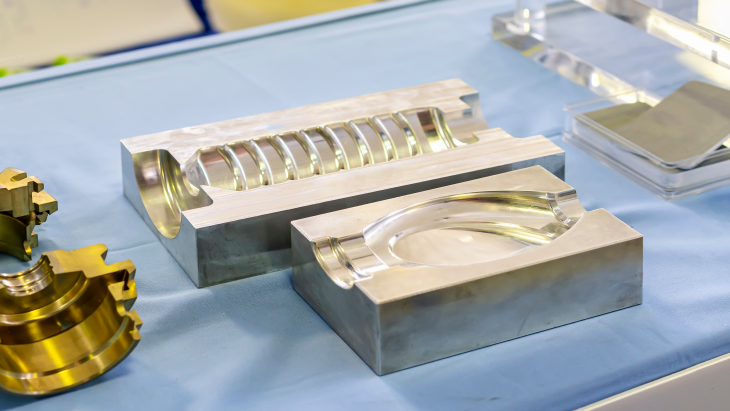Accelerating Quality Control in Plastics Manufacturing
In the efficiency-driven world of plastic part manufacturing, yielding products of the highest quality is integral to customer satisfaction, product reliability, and securing a competitive edge. Implementing quality control (QC) measures is one way for manufacturers to guarantee final part quality. However, there are several factors that might impede the ability to successfully conduct quality control.
In our previous article ‘#3 Quality Assurance: The Problem with Plastic’, we covered the overarching theme of quality assurance (QA). Being a vital subset of quality assurance, this article will investigate quality control, a few common QC methods in plastic part production, and how sensXPERT unlocks optimization opportunities in the QC process.
Discover how innovative solutions are revolutionizing the manufacturing landscape and empowering manufacturers to uphold the highest of quality standards, all while optimizing their production efficiency.

What is Quality Control?
Simply defined in the previous blog post as “a subcategory of QA that refers to the monitoring and inspection of production processes”, quality control is essential in plastic part manufacturing. It ensures that products are sent out without defects, machines function adequately, and general scrap rates and costs are minimized.
The main purpose of quality control in plastics manufacturing is to detect, record, and classify defects – such as warping, sink marks, voids, or contamination – before the parts move downstream. In this way, defects or issues that might impact product performance are avoided early on, rather than closer to product distribution.
Common Quality Control Measures in Plastics Manufacturing
There are a range of quality control measures that manufacturers might implement in their production processes, examples being statistical process control, visual inspections, or mechanical testing. Besides defect detection, these measures are valuable for waste reduction, enhancing production efficiency, abiding by regulatory requirements, and maintaining a positive company reputation.
- Inspection and Testing
From visual inspections to mechanical testing, specialized examinations of a finished part or product are conducted to identify any possible defects or to assess a product’s durability and performance.
- Process Monitoring
Another quality control measure involves the monitoring of plastics manufacturing processes. More specifically, process parameters such as temperature, pressure, cycle time, raw material characteristics, and machine settings can be closely monitored to promptly identify any potential deviations from desired parameters.
- Statistical Process Control (SPC)
SPC is a technique used to statistically analyze process parameters and variations. To do so, data is collected from production cycles and statistical tools are used to detect patterns, trends, and abnormalities in the data. SPC can aid in addressing potential issues prior to the production of defective parts.
- Corrective and Preventive Actions (CAPA)
Should any process variations be discovered, CAPA can be implemented to prevent the recurrence of any identified issues. By introducing corrective and preventive actions, process parameters can be adjusted, tooling and equipment can be modified, training or supervision can be improved, and more.
- Documentation and Records
A significant element of quality control is maintaining comprehensive documentation on inspection results, process data, or any corrective actions taken. In doing so, evidence of complying with regulations and upholding quality standards is recorded, which can be used for traceability and continuous development.
Challenges in Quality Control
In our last article, we outlined a few common challenges manufacturers face with assuring quality in their final products. To summarize, using visual inspections for defect detection can lead to inconsistencies, batch-to-batch deviations in raw materials can negatively impact final product quality, and environmental influences like temperature and humidity can variably influence material behavior during processing.
Several other challenges, such as product designs or tooling and equipment, can negatively impact effective quality control. For example, if a product is poorly designed, its manufacturability can be compromised. Similarly, poor mold designs can lead to the production of a defective part. Furthermore, if the machines or equipment involved in the manufacturing process face failures or are not properly calibrated, unsuitable parts can be produced before the failures are discovered.
Quality control measures are put into action post-production to investigate possible deviations and apply preventive actions for future processes. However, manufacturers cannot prevent qualitative issues during production due to a lack of process transparency.
How sensXPERT Unlocks Optimization Opportunities in Quality Control
Developed to combat the previously mentioned challenges and to optimize quality control in the manufacturing realm, sensXPERT uses real-time material characterization data and predictive algorithms to detect potential quality issues during production cycles. On this page, you can discover the inner workings of the sensXPERT Digital Mold solution.
Being a process control solution, sensXPERT offers manufacturers dynamic process adaptation. Fully integrated sensXPERT mold sensors act as feedback channels during production, meaning that operators are informed when process parameters vary in real-time. Thus, the cycle can be promptly adjusted to avoid producing defective parts. Furthermore, using extensive material know-how, sensXPERT Digital Mold measures in-mold material behavior and assesses certain quality markers to account for potential raw material deviations.
By implementing sensXPERT in their production processes, manufacturers not only optimize their quality control measures, but also digitize their processes. With its Cloud connectivity, this solution also digitally stores all process data and generates a digital thread per part produced. In this way, the documentation step in the quality control procedure is automated.
On the whole, this solution empowers manufacturers to conserve high quality standards and improve efficiency in both production and quality control procedures.